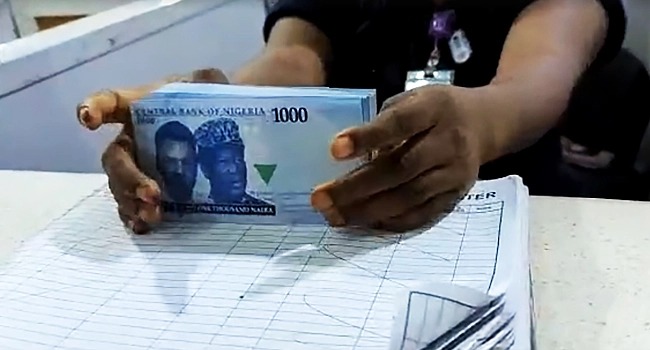The Federal Government spent ₦12.36 trillion on debt servicing in 2024, representing 35.26 per cent of the ₦35.05 trillion national budget and exceeding the year’s allocation for debt repayment by 52.7 per cent.
According to the Fourth Quarter 2024 Budget Implementation Report released by the Budget Office of the Federation, Nigeria recorded a fiscal deficit of ₦13.51 trillion during the year, ₦4.34 trillion (47.3 per cent) higher than the projected figure and above the ₦10.55 trillion deficit recorded in 2023.
The report revealed that the deficit was financed through multilateral and bilateral project-tied loans (₦1.98 trillion), domestic borrowing (₦6.06 trillion), foreign loans (₦3.37 trillion), and budget support funding (₦3.19 trillion).
It also showed that Nigeria’s total public debt-to-GDP ratio rose to 61.22 per cent by December 2024, surpassing the national limit of 40 per cent and the international benchmark of 56 per cent.
Total government revenue stood at ₦20.98 trillion at the end of 2024, an increase of ₦8.50 trillion (68.1 per cent) compared to 2023’s ₦12.48 trillion, but ₦4.89 trillion (18.9 per cent) short of the 2024 target.
On expenditure, the Federal Government spent ₦34.49 trillion, ₦56 billion less than the ₦35.05 trillion budget estimate but ₦11.45 trillion (49.7 per cent) higher than 2023’s ₦23.04 trillion.
Non-debt recurrent spending reached ₦8.53 trillion, down by ₦2.74 trillion (24.3 per cent) from the ₦11.27 trillion budgeted, though higher than 2023’s ₦7.08 trillion. In the fourth quarter alone, non-debt recurrent expenditure was ₦3.03 trillion, while statutory transfers amounted to ₦435.7 billion.
Debt servicing in Q4 2024 hit ₦6.72 trillion, ₦1.84 trillion (37.7 per cent) above projections. Of this, ₦1.32 trillion went to servicing domestic debt, slightly below the quarterly estimate by ₦6.97 billion.
The report further noted that ₦5.81 trillion was released and cash-backed for ministries, departments, and agencies (MDAs) to execute capital projects, but only ₦3.27 trillion, representing 81.9 per cent, had been utilised as of June 30, 2025.
National
 News MasterUpdated 2 months Ago1 Mins read250 Views
News MasterUpdated 2 months Ago1 Mins read250 Views
FG Spent 35% of 2024 Budget on Debt Servicing, Records ₦13.51tr Deficit

Share
Latest Posts
Related Articles
National
FG Announces Christmas & New Year Break: Dec 25‑26 and Jan 1 Off
The Federal Government has announced that Thursday, December 25 and Friday, December 26, 2025 will be observed...
10 hours Ago
National
Tinubu Seeks National Assembly Approval to Extend 2025 Budget to March 2026
President Bola Ahmed Tinubu has formally requested the National Assembly’s approval to...
2 days Ago
National
N’Assembly Vows Rigorous Scrutiny of 2026 Budget Proposal
The National Assembly has pledged to subject the 2026 Appropriation Bill to...
2 days Ago
National
Police defend tinted glass permit policy, dismiss NBA president’s claims
The Nigeria Police Force has defended its Motor Vehicle Tinted Glass Permit...
2 days Ago












Leave a comment